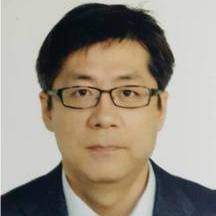Polymeric Nanofiber Membranes
A special issue of Polymers (ISSN 2073-4360). This special issue belongs to the section "Polymer Processing and Engineering".
Deadline for manuscript submissions: closed (31 July 2020) | Viewed by 16081
Special Issue Editors
Interests: nanofibers; polymeric membrane; IPN; artificial muscle
Special Issues, Collections and Topics in MDPI journals
Interests: electrospinning; separation/purification; SERS; metal nanoparticles and their organic catalytic properties; biocompatible hybrid nanomaterials; polymer-inorganic nanocomposites for DDS
Interests: electrochemical hydrogen generation (PEM water electrolysis; alkaline water electrolysis; AEM water electrolysis and anhydrous ammonia electrolysis) and Electrochemical Power Generation (PEFC, AEMFC, and so on)
Special Issues, Collections and Topics in MDPI journals
2. ARC Research Hub for Nutrients in a Circular Economy (NiCE), School of Civil and Environmental Engineering, Faculty of Engineering and IT, University of Technology Sydney, Sydney, NSW 2007, Australia
Interests: membrane technology; desalination; solar water evaporation; membrane distillation; resource recovery; electrospinning; nanofibers
Special Issues, Collections and Topics in MDPI journals
Special Issue Information
Dear colleagues,
Membrane systems are used on a large scale to produce drinking water from the sea water and to clean industrial effluents by reverse osmosis, to recover valuable constituents by electrodialysis, to separate alcohol from alcohol–water mixtures by pervaporation, to remove toxins from the blood stream in an artificial kidney by diffusion dialysis, and in emission-free automobiles using fuel cells. However, polymeric membrane can be prepared, generally, via two methods, phase inversion and electrospinning techniques. The phase inversion technique is a conventional but commercially preparation membrane. However, the electrospinning technique is a relatively new preparation method for MF or UF membranes. It has been introduced to make a nonwoven nanofibrous mat or nanofibrous membrane. In this technique, electrostatic charge is introduced to the solution jet, causing a thin fiber with a high surface area; hence, it can be used in applications where high surface area-to-volume or length-to-diameter ratios are required. Moreover, the pore size can be controlled easily by controlling the time of electrospinning. Hence, it can be used as a filter for filtering microparticles as well as nanoparticles. Adding to that, nanofibers with inorganic material can be produced for additional functional properties, such as nanosilver for antibacterial function, CNT for antistatic function, TiO2 for high mechanical strength, grephene oxide for antifouling property, and so on. However, even though the nanofiber mat has many advantages for the water treatment membrane, it has not been used commercially so far because of its extremely low mechanical property and difficulty of mass production. In this Special Issue, nanofiber membranes with various polymers such as PVdF, PAN, Polyamide, Polyester, Polyurethane, and so on will be covered. An important aspect of the Special issue will be preparation using the electrospinning method, characterization in terms of applications, i.e., water treatment and energy applications, functional nanofiber membranes with various nanomaterials, etc. Commercial nanofiber membranes from the industry are particularly welcome.
Prof. Hongsik Byun
Prof. Jun-Hyun Kim
Prof. Chang Hyun Lee
Prof. Leonard Tijing
Guest Editors
Manuscript Submission Information
Manuscripts should be submitted online at www.mdpi.com by registering and logging in to this website. Once you are registered, click here to go to the submission form. Manuscripts can be submitted until the deadline. All submissions that pass pre-check are peer-reviewed. Accepted papers will be published continuously in the journal (as soon as accepted) and will be listed together on the special issue website. Research articles, review articles as well as short communications are invited. For planned papers, a title and short abstract (about 100 words) can be sent to the Editorial Office for announcement on this website.
Submitted manuscripts should not have been published previously, nor be under consideration for publication elsewhere (except conference proceedings papers). All manuscripts are thoroughly refereed through a single-blind peer-review process. A guide for authors and other relevant information for submission of manuscripts is available on the Instructions for Authors page. Polymers is an international peer-reviewed open access semimonthly journal published by MDPI.
Please visit the Instructions for Authors page before submitting a manuscript. The Article Processing Charge (APC) for publication in this open access journal is 2700 CHF (Swiss Francs). Submitted papers should be well formatted and use good English. Authors may use MDPI's English editing service prior to publication or during author revisions.
Keywords
- Membranes
- Nanofiber
- Membrane composites
- Electrospinning
- Membrane applications
- Filtration
- Membrane fouling
- Modification of membranes
- Nanofiber membrane systems
- Air filter with nanofiber









